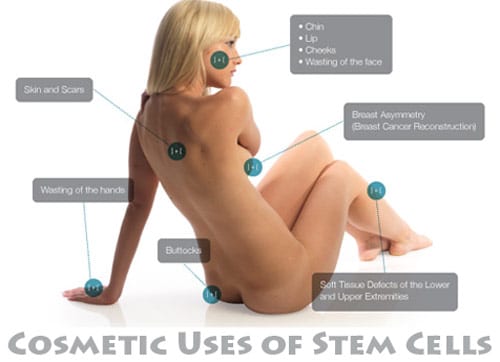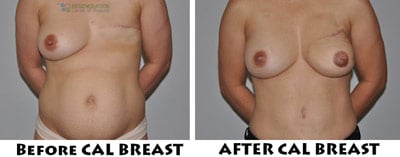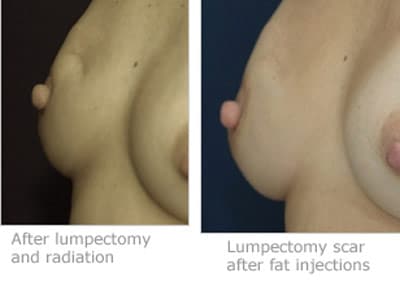Fat transfer breast augmentation essentially uses liposuction to take fat from other parts of your body and inject it into your breasts. This is a breast augmentation option for women who are looking for a relatively small increase in breast size and would prefer natural results.
Having to deal with another surgery after a mastectomy is the last thing you should have to suffer through. If you are looking to reclaim what’s rightfully yours then look no further. The regeneration center of Thailand provides you with a unique stem cell enriched breast reconstruction for women who have had
- Modified radical mastectomy
- Total or “Simple” mastectomy
- Radical mastectomy,
- Partial mastectomy
- Subcutaneous mastectomy (nipple-sparing)
- Or Prophylactic mastectomy
Our treatment is one of the only treatments that uses autologous mesenchymal stem cells, platelet rich plasma and growth factors to produce amazing and 100% natural looking. Please note we do not use machines such as BRAVA to temporary expand tissue as such an expansion is artificially created and temporary and cannot be as effective as laboratory expanding enriched stem cells.
CAL breast reconstruction is minimally invasive to heal scars quickly and does not require foreign objects such as breast implants to recreates volume resulting is a very natural feeling breasts.The cell and fat enriched treatment also does not affect breast or nipple sensation in a negative way.
Unnatural Breast Implants are finally a thing of the past. New advances in friendly polymers and cell assisted bio-scaffolding is enabling women with little or no fat to get the benefits of having larger breasts without any artificial materials such as silicone.Cell Enhanced Breast Augmentations, uses your own stem cell rich stomach fat, to enlarge/reshape your breasts without the use unnatural and artificial breast implants. These stem cells are from your own body and not from the often controversial embryonic stem cells.
Breast Reconstruction Using Stem Cells

Stem Cells With Fat Breast Reconstructionutilizes your own body fat or adipose tissue. Adipose fat is rich in terms of the amounts of stem cells and most importantly the progenitor cells.
100cc t0 400cc of belly fat is gently removed via a Mini-Liposuction.The fat will then be processed in our cell laboratory in Bangkok to test,isolate and extract the stem cells. The doctors will then concentrate the stem cells. The newly grafted fat, expanded stem cells and growth factors significantly improve the fats overall survival thus giving much better results with more retention.
The stem cells will undergo concentration using the fat, and/or PRP (platelet rich plasma) growth elements as well as other bio-scaffolding matrix. This mix is then carefully re-injected in multiple areas around the breast tissue generally under local anesthesia. The combination of the fat,growth factors and stem cells will result into permanent volume increase. An increase of .5 – 1.5 cup size gains with more natural symmetry are expected for most patients.
The result is enlarged breasts which are considerably more natural-looking than implants and without the fear of being harmed with artificial implants. In contrast to implants, the stem cell breast augmentations won’t interfere with any future Mammograms.
Are Stem cells + Fat Dangerous?
The stem cells we use in our treatments are 100% safe since we use ONLY Autologous fat (From the patient only). At this time, Stemcell Breast enhancementscannotuse donated fat (allogeneic), fetal stem cells,animal or plant derived stem cells or even the controversial embryonic stem cells. The drawbacks to implants together with recent technological developments prompted the recent boom in natural fat breast augmentations. Numerous Reconstructive cosmetic surgeons around the world are still unaware from the new and enhanced methods of breast augmentation yet still advise patients to not undergo this process due to restrictions placed upon them by governing bodies.
The typical myths you’ll hear from some doctors who don’t offer the Stemcell Enriched augmentations include:
Myth: The majority of the fat does not survive so more than one surgery is required
Truth: New methods have confirmed a 60-80% fat retention/survival. Our Enriched Mesenchymal Stem Cell Methods incorporated, survival may be even greater.
The option breast implants have to be replaced each every ten years and issues like scarring and rupture are typical.
Myth: Calcification brought on by the surgery can interfere with mammograms
Truth: Researches have confirmed that newer digital mammograms can effortlessly evaluate calcification within the breast, whereas the option breast implant procedures, block greater than Ω from the breast from the view of mammograms.
Ideal candidates for Stem Cell Fat Breast?
Anyone who desires a permanent improvement in breast size in a all-natural manner is perfect for this. Our treatment is also used by woman with small breasts due to rapid weight changes, breast feeding and/or age. Typical results have shown a permanent size increase of 1+ cup with significantly more fullness from this enriched fat + PRP + stem cells treatment.
Breast Repair & Reconstruction Before After Photos


The technology behind our treatment was initially invented in Japan for women post-mastectomy. The results were so dramatic that the fat lipotransfer technique became commercialized for use in both trauma/injuries and optional cosmetic surgeries such as breast enhancement and facelifts.
Stem Cellscan also help assist patients:
- Grow new blood vessels to feed the fat
- Releasing anti-inflammatory substances to help in healing [1]
- Releasing the needed growth components and factors which would aid in making the skin tighter in the breasts.
Stem Cell Breast Augmentation Cost
The average cost of breast augmentation surgery is $4,516, according to the most recent statistics from the American Society of Plastic Surgeons. This average cost is only part of the total price – it does not include anesthesia, operating room facilities or other related expenses. Please consult with your plastic surgeon’s office to determine your final fee.
A surgeon’s fee for breast augmentation will be based on his or her experience, the type of procedure used and the geographic office location.
Many plastic surgeons offer patient financing plans for breast augmentation, so be sure to ask.
Breast augmentation costs may include:
- Anesthesia fees
- Hospital or surgical facility costs
- Medical tests
- Post-surgery garments
- Prescriptions for medication
- Surgeon’s fee
Fat Transfer Breast Augmentation
A fat transfer breast augmentation is a cosmetic procedure to enlarge your breasts. Surgeons use liposuction to harvest fat cells from your stomach, hips, thighs, back or arms. Afterward, these areas look slimmer. Providers inject the fat cells into your breasts, where they remain for life. A fat transfer procedure carries fewer risks than breast implants. However, it only slightly enlarges the breasts and doesn’t firm them up. For these effects, you need a breast lift or breast implants.
What is breast augmentation?
Breast augmentation is cosmetic surgery to increase breast size and enhance the shape of your breasts. The goal of this type of plastic surgery is to change your appearance. Some people call this procedure a “boob job.”
What are the types of breast augmentation?
Breast augmentation may take place using:
- Breast implants.
- Fat transfer.
What’s the difference between breast augmentation and breast reconstruction?
Breast augmentation is for healthy people who want to improve their appearance. It isn’t medically necessary. You can use breast implants or fat transfer for breast augmentation.
Breast reconstruction takes place after breast cancer surgery. It recreates one or both breasts after a mastectomy (breast removal). You must get breast implants for breast reconstruction.
Should I get a fat transfer breast augmentation?
Choosing a breast augmentation method is a personal decision. You may consider this procedure if you want slightly larger breasts but don’t want breast implants.
Who should not get a fat transfer breast augmentation?
People who have little body fat may not be good candidates for fat transfer. Your provider has to be able to remove more fat cells than they’ll use. That’s because some cells die off during the process. People with low body fat may need breast implants instead.
People who have obesity, experience drastic weight fluctuations or smoke may not be good candidates either. Ideally, you should be in good health, a nonsmoker and able to maintain a weight that’s healthy for you.
PROCEDURE DETAILS
Who performs fat transfer breast augmentations?
Cosmetic surgeons perform fat transfer breast augmentations. These plastic surgeons are medical doctors who specialize in aesthetic procedures that enhance a person’s appearance.
What happens during a fat transfer breast augmentation?
A fat transfer breast augmentation is an outpatient procedure. You go home the same day. You receive general anesthesia to help you sleep through the surgery.
During the procedure, your provider:
- Uses liposuction to harvest fat deposits from several areas of your body.
- Runs the fat cells through a centrifuge device to remove any impurities.
- Uses special syringes to inject the purified fat cells into different tissue layers inside of your breasts.
How long does a fat transfer breast augmentation last?
The results from a fat transfer breast augmentation are lifelong. It can take up to six months to see the final results. During this time, the fat cells settle into their new places, where they remain for life. Because some cells die after the injection, providers inject more fat cells than needed during the transfer.
Most people who undergo fat transfer breast augmentations are satisfied with the results. If you’re dissatisfied, your provider may recommend another fat transfer procedure.
